It’s that time again! Time for me to bring your attention to a variety of strange and interesting books never meant for children, but that contain some hint of influence (little or big) from the literary world of the youth. Feast thine peepers on the following:
We Were Brothers by Barry Moser
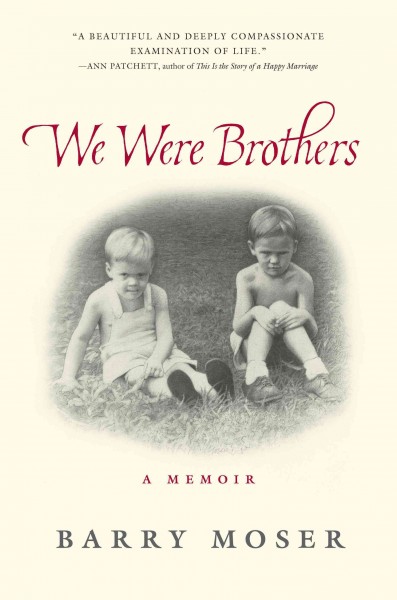
It’s not that Moser has spent his life only doing children’s books, but a significant portion of his artistic life has been dedicated to them. So when I was perusing my library’s new book section and stumbled on this I was amazed. There’s a Moser memoir out there? Indeed there is. Here’s a description of the book from the publisher:
“Preeminent illustrator Barry Moser and his brother, Tommy, were born of the same parents, were raised in the same small Tennessee community, and were poisoned by their family’s deep racism and anti-Semitism. But as they grew older, their perspectives and their paths grew further and further apart. From attitudes about race, to food, politics, and money, the brothers began to think so differently that they could no longer find common ground, no longer knew how to talk to each other, and for years there was more strife between them than affection.
When Barry was in his late fifties and Tommy in his early sixties, their fragile brotherhood reached a tipping point and blew apart. From that day forward they did not speak. But fortunately, their story does not end there. With the raw emotions that so often surface when we talk of our siblings, Barry recalls why and how they were finally able to traverse that great divide and reconcile their kinship before it was too late.”
It got great reviews as well.
Wonderfully Wordless: The 500 Most Recommended Graphic Novels and Picture Books by William Patrick Martin
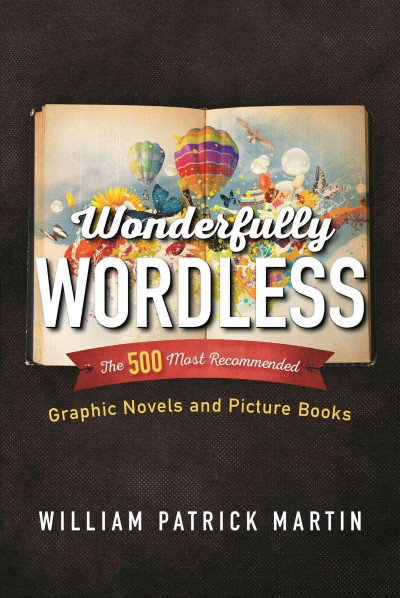
Missed this, did you? I’m not surprised. Published by Rowman & Littlefield it’s not been advertised to those of us in the children’s book world much at all. And here’s the kicker of a description: “… the first comprehensive best book guide to wordless picture books (and nearly wordless picture books).” The only review I’ve found of it was through Library Journal and they were not particularly impressed. That said, I remain curious about it. Wordless gets its day.
The Spring at Moss Hill by Carla Neggers
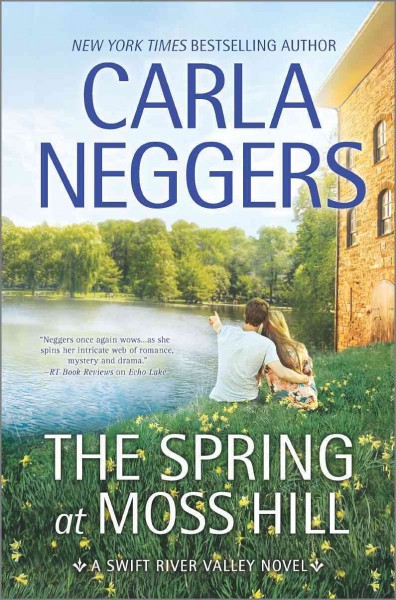
YESSSS! An actual honest-to-goodness contemporary romance novel. It’s not a straight-to-paperback, but I’ll take what I can get. Why is it on the list? Check out this product description: “A children’s book illustrator finds she has a lot in common with a private investigator who moves to town to keep a friend out of trouble.” Alas, you can’t give it to your favorite illustrator for the holidays. It ain’t out until January 26th.
Spirituality in Young Adult Literature: The Last Taboo by Patty Campbell and Chris Crowe
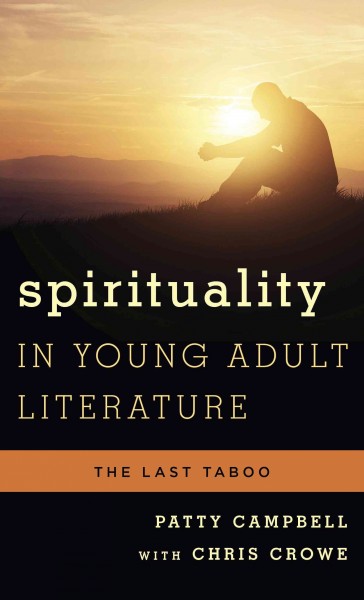
And here I always thought abortion was the last taboo. Shows what I know. The description reads, “This book examines the presentation of spiritual issues in young adult fiction. It looks at how religious ideas, and those matters that are defined more broadly as spiritual, are represented. YA novels are selected by the authors, who then explain how these pieces of literature can appear as metaphors or as more direct theological references.” So, naturally, I looked at the Table of Contents. They include “Church and Clergy, Mostly Negative”, “End Times and the Apocalypse”, “Other Faiths and Spiritual Practices: Islam, Hinduism, Buddhism, and a Sikh or Two”, and “Mormon Themes in YA Literature”. Admit it. You’re wondering what books are listed inside.
Fairy Tale Baking: More than 50 Enchanting Cakes, Bakes, and Decorations by Ramla Khan
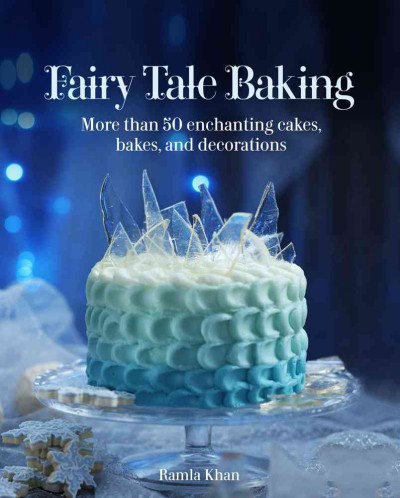
I know the fairy tale cake on the cover is probably Ice Queen / Frozen based but how cool would it be if it were The Glass Mountain instead? Edible gold paint is one of the ingredients you’ll need to make these complex creations. I didn’t even know they made it. Now I kind of want to cover all my food, no matter the time or day or foodstuff, with gold paint. Mmmmmm. Pricey.
The Violet Hour: Great Writers at the End by Katie Roiphe
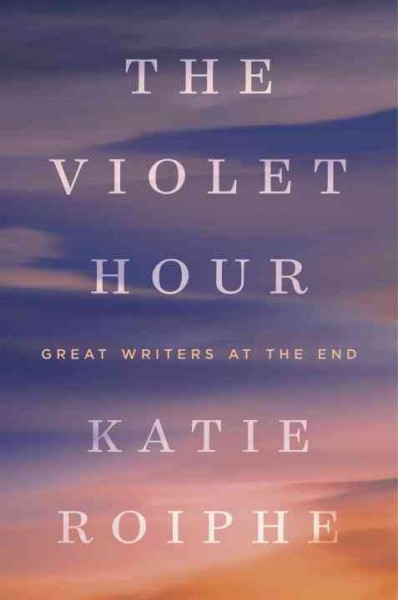
“From one of our most perceptive and provocative voices comes a deeply researched account of the last days of Susan Sontag, Sigmund Freud, John Updike, Dylan Thomas, and Maurice Sendak—an arresting and wholly original meditation on mortality.” Sendak! Of course I’m pleased a children’s book writer is considered “Great” by Ms. Roiphe. And you certainly couldn’t have selected a better topic to tie him in with. Sendak was nothing if not eloquent about sweet mortality.
The Braindead Megaphone by George Saunders

And finally, a book that isn’t in the least bit new (unlike all these others). I was listening to Pop Culture Happy Hour the other day and Glen Weldon mentioned that he had just read this book. In an almost throwaway line, he also mentions that in this collection of short essays, there is praise for Johnny Tremain. Come again? Sure as shooting, the title of Chapter Three is, “Thank You, Esther Forbes”. I have not read this, but if anyone has I’d love to know what his take on everyone’s favorite ex-silversmith is. According to the Kirkus review it, “details how his childhood reading of that author’s award-winning Johnny Tremain showed him how and why sentences matter.” Saunders says of the book that it was, “my first model of beautiful compression.” Fascinating.

Carolyn Conahan is the author and illustrator of several picture books, including The Twelve Days of Christmas in Oregon (Sterling), and The Big Wish (Chronicle), which was awarded the 2011 Oregon Spirit Book Award for Picture Books by the Oregon Council of Teachers of English.
 Award-winning author Jerdine Nolen‘s picture books often tell stories that blend fantasy and realism in an unsettling way that delights young readers and fires their imaginations, from her first book Harvey Potter’s Balloon Farm, which was made into a … Continue reading ... →
Award-winning author Jerdine Nolen‘s picture books often tell stories that blend fantasy and realism in an unsettling way that delights young readers and fires their imaginations, from her first book Harvey Potter’s Balloon Farm, which was made into a … Continue reading ... →
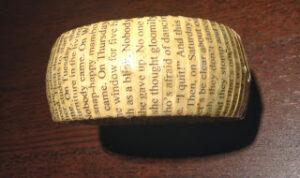 I have a sister. Did you know that? Tis true. She’s not a librarian and her interest in children’s literature pretty much begins and ends with me, which is probably why she hasn’t come up before. One thing she is? Crafty. Crafty as all get out. And the kicker is that she’s just started this new blog called The How To, How Hard, and How Much to Your Creative Products. Here’s how she describes it:
I have a sister. Did you know that? Tis true. She’s not a librarian and her interest in children’s literature pretty much begins and ends with me, which is probably why she hasn’t come up before. One thing she is? Crafty. Crafty as all get out. And the kicker is that she’s just started this new blog called The How To, How Hard, and How Much to Your Creative Products. Here’s how she describes it:
What if there was a blog out there that took Pinterest ideas and showed people how to do it, how much time it took, how much money was spent, and had a level of expertise (1-5). Maybe even sell the final product. Is this something people would read? Has it already been done? How could I rope guys into doing it (other than if it involved mustaches and bacon)? I’ve never blogged before but I feel like it might be helpful, especially since the holiday season is quickly approaching. People could even send me recommendations and I could do those as well.
And make it she has. Amongst other things she has a wide range of Halloween ideas including spider cookies, 5 minute ideas, and my personal favorite, the cleaver cupcakes. In fact, if you could just repin those cupcakes onto your Pinterest boards she’d be mighty grateful (there’s a contest she’s entering them into). But of special interest to the blog (aside from outright nepotism) was her recent posting on literary jewelry where she turned a book of mine into a bracelet. Nicely done, l’il sis.
- I attended the Society of Illustrators event the other day (did you know the place is free on Tuesdays?!) and the New York Times Best Illustrated results are on the cusp of an announcement soon. Both lists are chosen by artists as well as librarian types, and so one could consider them the form with which artists are allowed to voice their opinions about the best of the year (just as the National Book Awards are how authors talk about writing). Still, there are those that have disliked the Caldecott from the outset because it is decided not by artists but librarians. Robin Smith recently dug up a 1999 interview with Barry Moser voicing just such a concern. A hot little discussion then emerged in the Horn Book comments. Go! See!
- Brian Biggs + Jon Scieszka + 6 way auction = interesting.
- Our first shout-out! And from Tomie dePaola, no less. On The Official Tomie dePaola Blog you will find a lovely mention of the upcoming Wild Things: Acts of Mischief in Children’s Literature as penned by myself, Jules Danielson, and Peter Sieruta. Woot!
- I think a fair number of us have seen Business Insider’s Most Famous Book Set in Every State map by this point, but I’d just like to mention that what pleases me the most about it is the fact that they included children’s books as well as adult. Six children’s and one YA novel by my count.
- And since we’re on an interesting title kick, let’s throw out another one. True or False? Multicultural Books Don’t Sell. We’ve all heard that argument before. Now an actual honest-to-god bookseller tackles the question. You may normally know Elizabeth Bluemle from the ShelfTalker blog at PW, but here she’s guest talking at Lee & Low. Cleverly, she specifies whether or not we are talking about how they don’t sell to kids or how they don’t sell to adults. Without giving anything away, let me just say that her experiences mirror my own in the library.
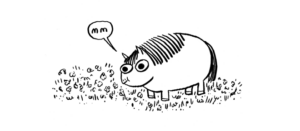 In other press release news, I am shocked and appalled that I wasn’t aware of this until now. I mean, I knew that Kate Beaton, the genius behind Hark, A Vagrant, was working on children’s books. What I did not know was how close to fruition my dream of shelving her in my children’s sections truly was. The Wired blog Underwire, of all places, was the one with the scoop when they interviewed Ms. Beaton. She discusses the book, which contains her most famous creation (the fat pony) and a princess. Says she about princesses in general, “. . . for little girls historically [princesses] are the only people like them who had any power at all. It’s not just oh, princes and dresses. It’s also, here’s a person with agency. Is she just someone who wants a pretty dress and prince? Or is she a warrior living in a battle kingdom? I think it just depends on how you depict what a princess is.” I think we know the direction Ms. Beaton will go in. And I waaaant it. Thanks to Seth Fishman for the link.
In other press release news, I am shocked and appalled that I wasn’t aware of this until now. I mean, I knew that Kate Beaton, the genius behind Hark, A Vagrant, was working on children’s books. What I did not know was how close to fruition my dream of shelving her in my children’s sections truly was. The Wired blog Underwire, of all places, was the one with the scoop when they interviewed Ms. Beaton. She discusses the book, which contains her most famous creation (the fat pony) and a princess. Says she about princesses in general, “. . . for little girls historically [princesses] are the only people like them who had any power at all. It’s not just oh, princes and dresses. It’s also, here’s a person with agency. Is she just someone who wants a pretty dress and prince? Or is she a warrior living in a battle kingdom? I think it just depends on how you depict what a princess is.” I think we know the direction Ms. Beaton will go in. And I waaaant it. Thanks to Seth Fishman for the link.
- As slogans go, this might be one of my favorites: “Kill time. Make history”. How do you mean? Well, NYPL is looking for a few good bored folks. Say they, “The New York Public Library is training computers how to recognize building shapes and other information from old city maps. Help us clean up the data so that it can be used in research, teaching and civic hacking.” Sometimes I just love my workplace.
- Me stuff time. Or rather, stuff I’m doing around and about the world that you might like to attend. You see, on November 6th I’ll be interviewing legendary graphic novelist Paul Pope at 4pm at the Mulberry Street library branch here in NYC. If you are unfamiliar with Mr. Pope’s name, all you really need to know is that he’s a three time Eisner Award winning artist who wrote the recent GN Battling Boy and whose work is currently on display at the Society of Illustrators on their second floor (which just means I get to tell you again that you can get in for free on Tuesdays). This event will also be free. If you’ve ever wondered what the “Mick Jagger of graphic novels” would look like, you’ll find out soon enough.
- Also going on in NYC, they have transferred Allegra Kent’s Ballerina Swan to the stage for kids. Makes perfect sense when you put it that way.
- My reaction to finding out that Henry Selick was going to direct Adam Gidwitz’s A Tale Dark and Grimm was simple. The best possible person is doing the best possible thing and is making everyone happy in the process. My sole concern? Selick’s going live action on this. What was the last live action film he directed? Monkeybone, you say? Ruh-roh. Thanks to PW Children’s Bookshelf for the link.
Remember that nice Marcie Colleen I mentioned earlier with her Picture Book Month Teacher’s Guide? Well, turns out she’s engaged to Jonathan Lopes, the Senior Production Manager at Little, Brown. And amongst the man’s many talents is the fact that he occasionally sculpts with LEGOs. Recently Hachette “held their Gallery Project, showcasing the talents of their employees.” Here’s what Jonathan made.
He’s 6-feet-tall and all LEGO, baby. Many thanks to Marcie Colleen for the link!






 The Cheshire Cheese Cat: A Dickens of a Tale
The Cheshire Cheese Cat: A Dickens of a Tale
By Carmen Agra Deedy and Randall Wright
Illustrated by Barry Moser
Peachtree Press
$16.95
ISBN: 978-1-56145-595-9
Ages 7-12
On shelves October 1, 2011
Animal stories. Done well and you get something like Charlotte’s Web or The Incredible Journey. Done poorly and you cannot name for me a more annoying genre. Some days it seems to me that every great children’s author eventually tries their hand at the style to varying degrees of success. Burned one time too many I’ve taken to just avoiding books with animals in them altogether unless there’s something that seems to be extraordinary about them. So when The Cheshire Cheese Cat came into my possession, I was inclined to put it aside. Then a friend and an editor both assured me it was lovely. And then there was the fact that Carman Agra Deedy, author of such great picture books as 14 Cows for America had co-authored it. Finally, it’s not every day that the great Barry Moser illustrates a new work of middle grade fiction. Add in the fact that there’s a Charles Dickens connection and I cracked. I read it. And reader, it was worth the reading. Not that it convinced me to rethink my animals-in-books opinions, but at least I may be a hair more open minded in the future . . . maybe.
The Cheshire Cheese Inn is a place of secrets. It seems that anyone who works or lives there has one. For Skilley the alleycat, his is a shame that has caused him to strike up a deal with the local mouse population that haunt the inn’s famous cheese production room. For Pip, his mouse friend, it has to do with the mysterious creature that lives amongst the mice, insisting on its own freedom. For the cook it’s a secret about the cheese, and for the barmaid the same. Only the famous writer Charles Dickens, a man that patronizes the inn, seems secret free. And yet, he too harbors a difficulty and a shame. It’ll take Skilley’s deal with Pip to set the spark that causes all these secrets to come to light, and it may possibly save the very monarchy of England as well!
As with any book starring the furry, it all comes down to personality. If you don’t believe in the characters then you haven’t anything to connect to. Here, the critters are infinitely interesting. Pip’s oversized vocabulary makes for a nice side element in the tale. If Skilley comes off as a kind of hired muscle, Pip is the brains behind the operation. From his first utterance of words like “sepulcher” and “perpetual internment” you can see that he is a cut above the general mouse population. Interestingly, once Pip start throwing out one hundred dollar words, the book follows suit. I caught words and phrases like “stygian darkness” bandied about without comment. It doesn’t grate, though, and such words and phrases are understandable within context. By the way, I just referred to Skilley as a kind of thug, but in fact there are depths to him. I was particularly fond of a moment when Pip mentions that his family died in a cleaver-related ac
This is amazing good news. Great news, in fact. I’m happy and proud to say that my book, Bystander, is included on the ballot for the 2012 New York State Reading Association Charlotte Award.

To learn more about the award, and to download a ballot or bookmark, please click here.
The voting is broken down into four categories and includes forty books. Bystander is in the “Grades 6-8/Middle School” category. Really, it’s staggering. There are ten books in this category out of literally an infinity of titles published each year. You do the math, people.
For more background stories on Bystander — that cool inside info you can only find on the interwebs! — please click here (bully memory) and here (my brother John) and here (Nixon’s dog, Checkers) and here (the tyranny of silence).
Below please find all the books on the ballot — congratulations, authors & illustrators! I’m honored to be in your company.
-
GRADES pre K-2/PRIMARY
Bubble Trouble . . . Margaret Mahy/Polly Dunbar
City Dog, Country Frog . . . Mo Willems/Jon J Muth
Clever Jack Takes the Cake . . . Candace Fleming/G. Brian Karas
Lousy Rotten Stinkin’ Grapes . . . Margie Palatini/Barry Moser
Memoirs of a Goldfish . . . Devin Scillian/Tim Bower
Otis . . . Loren LongStars Above Us . . . Geoffrey Norman/E.B. Lewis
That Cat Can’t Stay . . . Thad Krasnesky/David Parkins
Turtle, Turtle, Watch Out! . . . April Pulley Sayre/Annie Patterson
We Planted a Tree . . . Diane Muldrow/Bob Staake
-
GRADES 3-5/INTERMEDIATE
The Can Man . . . Laura E. Williams/Craig Orback L
Emily’s Fortune . . . Phyllis Reynolds Naylor
Family Reminders . . .
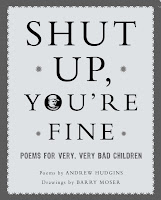 Books Editor Bill Eichenberger interviewed Andrew Hudgins, the poet behind Shut Up You're Fine, Poems for Very Very Bad Children for The Columbus Dispatch this week, saying "It takes a special kind of mind to get excited by the fact that mommy and salami are a perfect double rhyme." Here is an excerpt from the piece:
Books Editor Bill Eichenberger interviewed Andrew Hudgins, the poet behind Shut Up You're Fine, Poems for Very Very Bad Children for The Columbus Dispatch this week, saying "It takes a special kind of mind to get excited by the fact that mommy and salami are a perfect double rhyme." Here is an excerpt from the piece:
Q: My Bed Is Not a Boat is, superficially, funny. But like most of the poems, including I Love Ruby, there is an underlying trauma beneath the veneer of laughter, isn't there?
A: Mel Brooks once said, "Tragedy is when I cut my finger. Comedy is when you fall in an open sewer and die." Comedy is all about perspective. What I like in the poems you mention is that the kids don't even know what they are telling us. Say you got drunk at the junior prom and your date walked out on you. You'd be, I hope, ashamed and miserable for awhile, but after 30 years you can decide if you want to make the story funny when you tell it or, if you are so inclined, you can enjoy your misery all over again. That's also true about being a bed wetter.
Q: You write about a "flawless slice of bread." Is there too insignificant a topic for your poetry?
A: I've never seen a poem about trimming toenails, but I can imagine one. And then it might really have to be about something else, like the importance of insignificant things. In the bread poem, I was trying to capture the way a kid's mind works. I remember being so young I didn't know if there were principles involved in eating a sandwich. Which side should I choose to be the top of the sandwich, and wouldn't that make the bottom side feel rejected? And potato chips. You could spread them out across the plate and eat from large to small. Or, more likely, small to large. But you could also eat from most symmetrical to least. Or ugliest to prettiest. Even though I knew I was being silly, I couldn't stop my mind from wanting to organize the food. Which in retrospect is pretty funny.
Here's a thought about poetic subjects. Just today I saw an article about a group of gastroenterologists offering a prize for the best poem about colonoscopies. I'm guessing they aren't expecting humorous poems. And I'm also guessing that's exactly what they'll get.
Read the entire interview with Barry Moser's illustrations here!
 Andrew Hudgins's riotously naughty new collection of mischievous poems about the dark side of childhood is now on sale. Illustrated by Barry Moser, Shut Up You're Fine: Poems for Very, Very Bad Children has been called by January Magazine a "compelling and hilariously offensive little book." Bill Eichenberger of The Columbus Dispatch described it as "snort out loud and choke on your coffee funny," and we will post the link to his wonderful interview with Hudgins soon.
Andrew Hudgins's riotously naughty new collection of mischievous poems about the dark side of childhood is now on sale. Illustrated by Barry Moser, Shut Up You're Fine: Poems for Very, Very Bad Children has been called by January Magazine a "compelling and hilariously offensive little book." Bill Eichenberger of The Columbus Dispatch described it as "snort out loud and choke on your coffee funny," and we will post the link to his wonderful interview with Hudgins soon.
Meanwhile, John McIntyre weighed in at The Baltimore Sun:
“Andrew Hudgins, whom I had the good fortune to meet in graduate school in Syracuse, has just brought out another in a distinguished line of collections of poetry: Shut Up, You’re Fine: Poems for Very, Very Bad Children (Overlook Press, 118 pages, $14.95).
Your initial reaction might run along the lines of oh good, something to put on the shelf next to Edward Gorey’s
Gashlycrumb Tinies. Well, yes and no. Mr. Hudgins has a distinct taste for the macabre, but these poems explore more deeply the double nature of childhood.
“Bad” children are those who do not meet adults’ expectations. They wet the bed, break things they weren’t supposed to handle, shy away from Grandma’s hugs. These are the children whose parents yell at them and smack them in the supermarket, neglect them, demean them, complain about them and warp. Here’s the voice of one of them:
I’ve got my eye on wedding bands / so Dad can marry Mom / or at least not take another date / to Mom’s third junior prom.
But bad children are also those bad in the bone, harboring little hatreds and destructive impulses, only a step or two removed from Lord of the Flies, ready to grow up into monsters like their parents. Here’s one of them, in “Our Neighbor’s Little Yappy Dog”:
But in the end we all agree / my plan will leave it deader. / I want to feed it—tail-first, slowly / into the chipper-shredder.
I think these verses may not be to everyone’s taste; I’ve been discouraged from reading them aloud at home. They are at once so clear-sighted about how horrible childhood — and children — can be, and yet, undeniably, terribly, funny.
They might move you to recall the work of another poet,
Philip Larkin, who wrote: Man hands on misery to man. / It deepens like a coastal shelf. / Get out as early as you can, / And don’t have any kids yourself.”










 Award-winning author Jerdine Nolen‘s picture books often tell stories that blend fantasy and realism in an unsettling way that delights young readers and fires their imaginations, from her first book Harvey Potter’s Balloon Farm, which was made into a …
Award-winning author Jerdine Nolen‘s picture books often tell stories that blend fantasy and realism in an unsettling way that delights young readers and fires their imaginations, from her first book Harvey Potter’s Balloon Farm, which was made into a … 






Oh, WOW, the Moser book!! Thanks for the heads up. And would it have been so hard to have given us a HINT about which books were included in the YA/Spirituality book? You’re supposed to do all the hard things FOR ME. Like, read the book.
Nah. Haven’t seen it myself. I don’t think it’s been published yet. We should place our bets now!
Am currently reading the Moser book and it is lovely. Nothing directly about children’s book illustration yet, though….